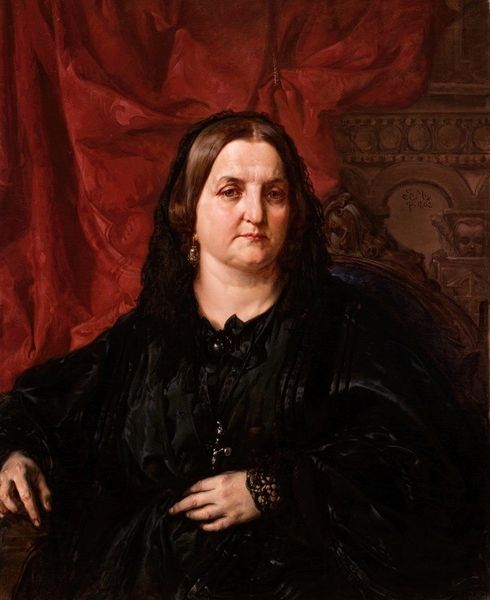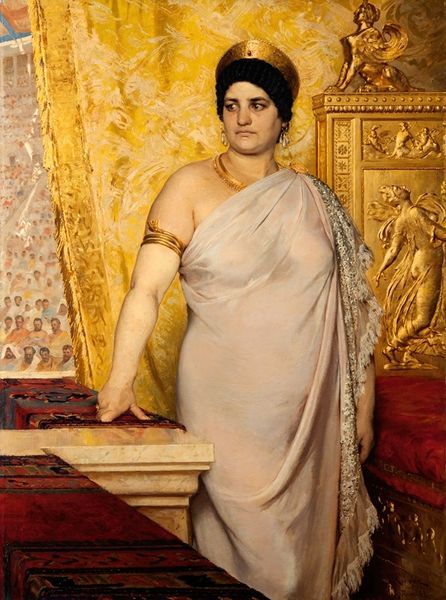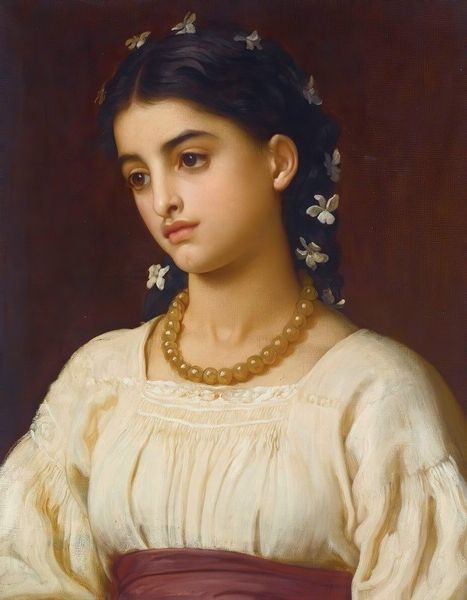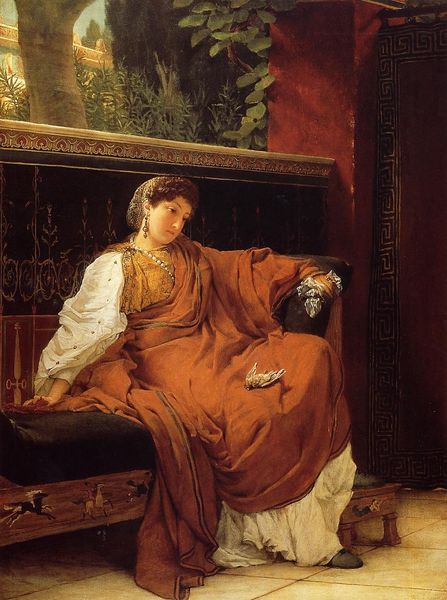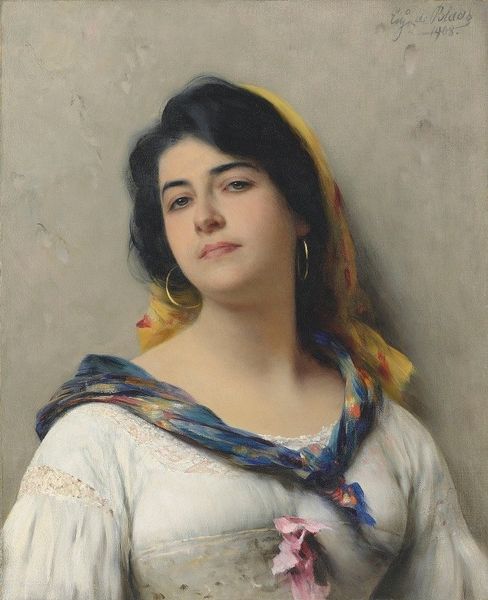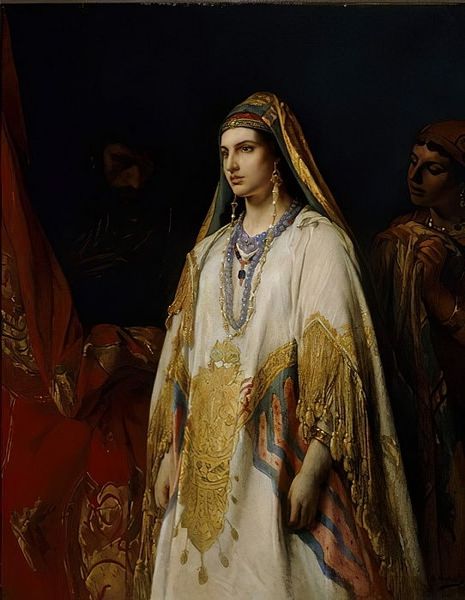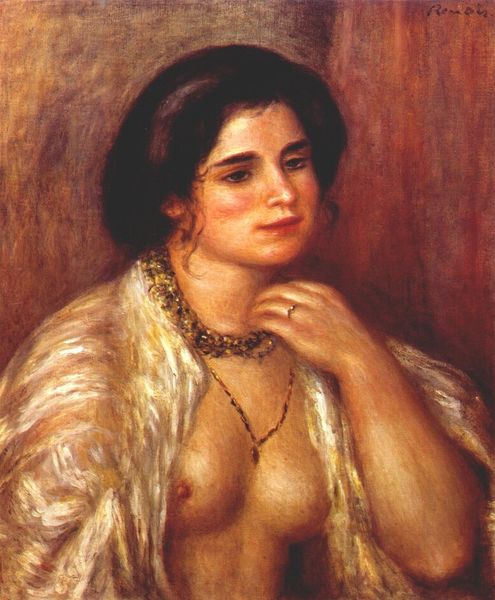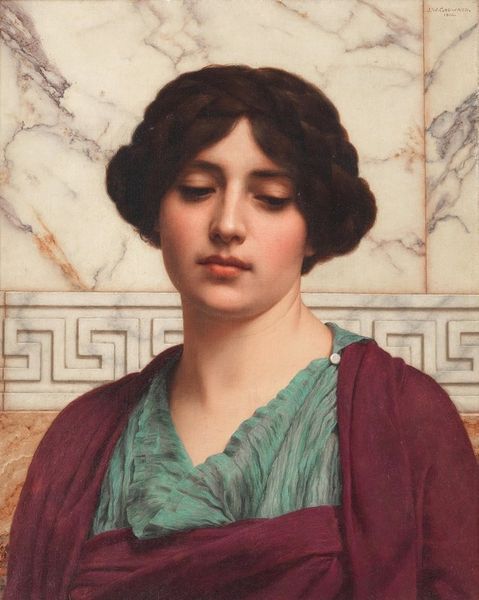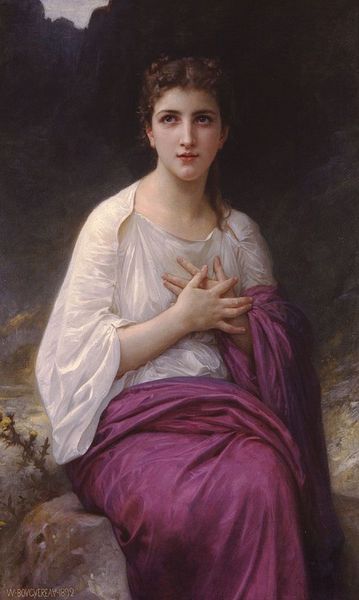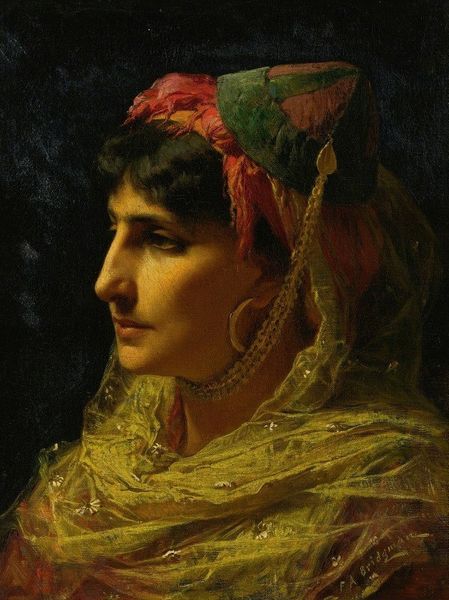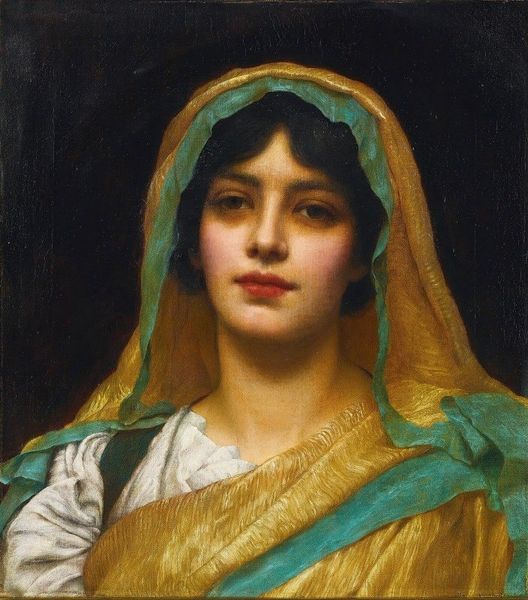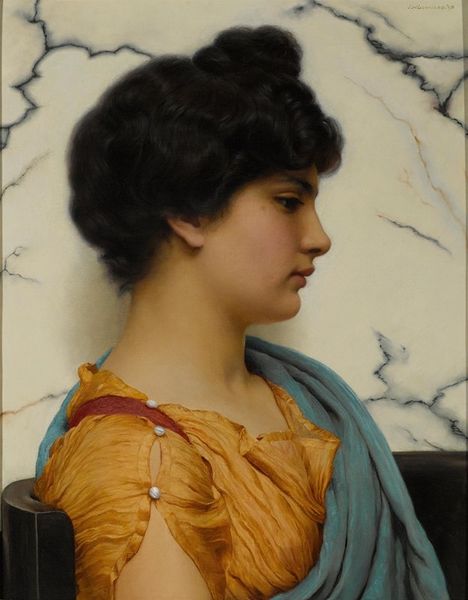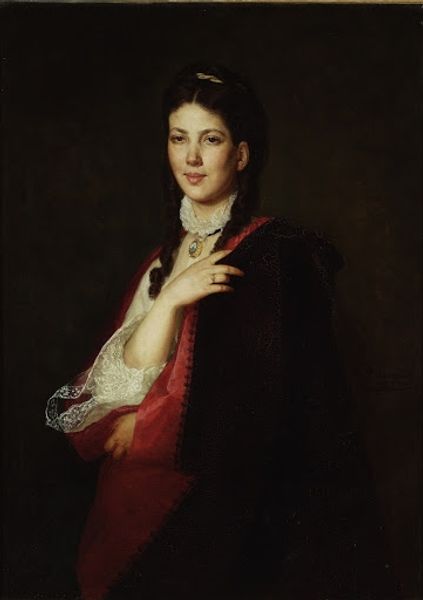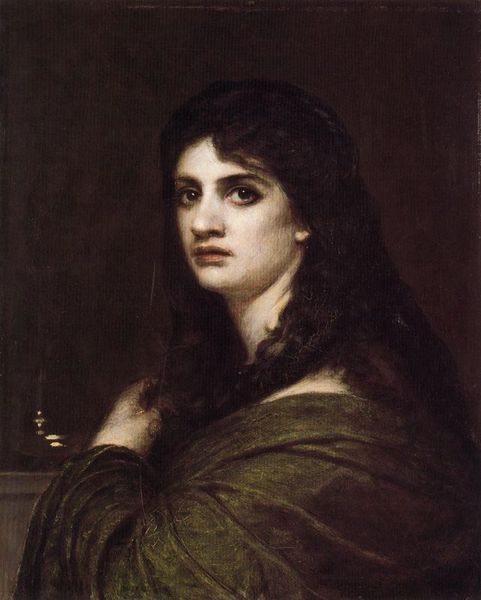
Copyright: Public Domain: Artvee
Curator: This portrait by Arnold Böcklin, created in 1863, presents Angela Böcklin as a muse. It is an oil painting that embodies a Romantic and Academic style. Editor: My initial impression is of a reserved composure, almost severe, but softened by the luminous fabric and the cool blue backdrop. It's remarkably balanced in terms of color. Curator: It's interesting to consider the title. By portraying Angela as a muse, Böcklin aligns her with a powerful symbolic role – the inspiration for creativity. The laurel branch she holds, a classical symbol of victory and artistic triumph, further reinforces this idea. What do you see in its symbolism? Editor: The fall of light seems crucial here, look how he articulates the folds and shadows. It gives her presence weight, makes the figure tangible against that rather flat, decorative background. The background almost reads as a patterned screen rather than a space she occupies. It focuses the visual attention solely on the form of the body. Curator: Precisely. Her gaze, directed at the viewer, suggests a level of self-awareness and perhaps a challenge. The rosy accessories soften the portrait with the more stern aspects, and hint towards tenderness as a characteristic of artistic genius. Böcklin, very purposefully, blends classical ideals with a contemporary portrait. Editor: Yes, and notice how the symmetry—or near symmetry—of the composition, along with the restricted palette, contributes to that sense of poised composure. Curator: Considering Böcklin's interest in mythological and allegorical subjects, this portrait offers a personal glimpse into his world, where the muse is not some distant goddess, but someone intimately connected to him. The portrayal transforms the personal into a symbol of creative inspiration. Editor: Analyzing these compositional choices gives access into its deeper artistic ambitions, that is far more rich and layered. The work operates within dualities: warmth and coolness, reality and artifice, stillness and potential. Curator: The symbols invite viewers to see the sitter as more than a simple representation, someone who held real intellectual and inspirational significance for the artist himself. Editor: Seeing the elements function within the painting and also how they affect our perception shifts the art to one of a more personal level for both artist and the observer.
Comments
No comments
Be the first to comment and join the conversation on the ultimate creative platform.
